| |||||
| Decades: | |||||
|---|---|---|---|---|---|
| See also: | Other events of 1419 History of France • Timeline • Years | ||||
Events from the year 1419 in France .
| |||||
| Decades: | |||||
|---|---|---|---|---|---|
| See also: | Other events of 1419 History of France • Timeline • Years | ||||
Events from the year 1419 in France .
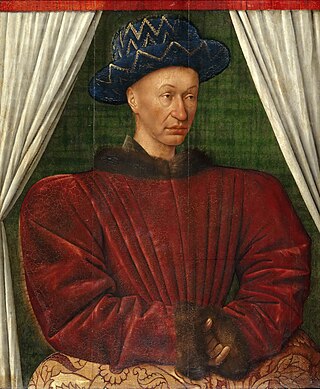
Charles VII, called the Victorious or the Well-Served, was King of France from 1422 to his death in 1461.

Charles VI, nicknamed the Beloved and later the Mad, was King of France from 1380 until his death in 1422. He is known for his mental illness and psychotic episodes that plagued him throughout his life.
The Treaty of Troyes was an agreement that King Henry V of England and his heirs would inherit the French throne upon the death of King Charles VI of France. It was formally signed in the French city of Troyes on 21 May 1420 in the aftermath of Henry's successful military campaign in France. It forms a part of the backdrop of the latter phase of the Hundred Years' War finally won by the French at the Battle of Castillon in 1453, and in which various English kings tried to establish their claims to the French throne.

Philip III was Duke of Burgundy from 1419 until his death. He was a member of a cadet line of the Valois dynasty, to which all 15th-century kings of France belonged. During his reign, the Burgundian State reached the apex of its prosperity and prestige, and became a leading centre of the arts.
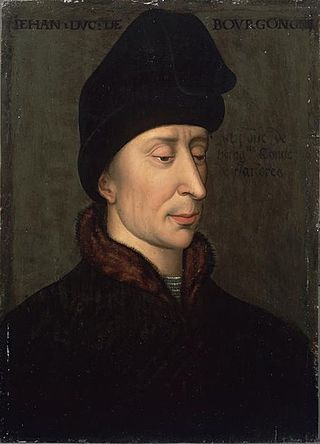
John I was a scion of the French royal family who ruled the Burgundian State from 1404 until his death in 1419. He played a key role in French national affairs during the early 15th century, particularly in the struggles to rule the country for the mentally ill King Charles VI, his cousin, and the Hundred Years' War with England. A rash, ruthless and unscrupulous politician, John murdered the King's brother, the Duke of Orléans, in an attempt to gain control of the government, which led to the eruption of the Armagnac–Burgundian Civil War in France and in turn culminated in his own assassination in 1419.

Arthur III, more commonly known as Arthur de Richemont, was briefly Duke of Brittany from 1457 until his death. He is noted primarily, however, for his role as a leading military commander during the Hundred Years' War. Although Richemont briefly sided with the English once, he otherwise remained firmly committed to the House of Valois. He fought alongside Joan of Arc, and was appointed Constable of France. His military and administrative reforms in the French state were an important factor in assuring the final defeat of the English in the Hundred Years' War.

Charles II, called the Bold was the Duke of Lorraine from 1390 to his death and Constable of France from 1418 to 1425.

Louis I of Orléans was Duke of Orléans from 1392 to his death. He was also Duke of Touraine (1386–1392), Count of Valois (1386?–1406) Blois (1397–1407), Angoulême (1404–1407), Périgord (1400–1407) and Soissons (1404–07).
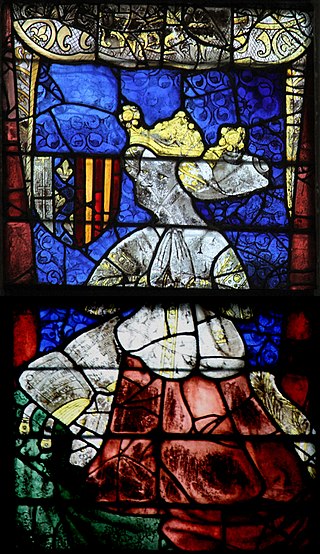
Yolande of Aragon was Duchess of Anjou and Countess of Provence by marriage, who acted as regent of Provence during the minority of her son. She was a daughter of John I of Aragon and his wife Violant of Bar. Yolande played a crucial role in the struggles between France and England, influencing events such as the financing of Joan of Arc's army in 1429 that helped tip the balance in favour of the French. She was also known as Yolanda de Aragón and Violant d'Aragó. Tradition holds that she commissioned the famous Rohan Hours.
The Armagnac faction was prominent in French politics and warfare during the Hundred Years' War. It was allied with the supporters of Charles, Duke of Orléans against John the Fearless after Charles' father Louis of Orléans was killed on a Paris street on the orders of the Duke of Burgundy on 23 November 1407.
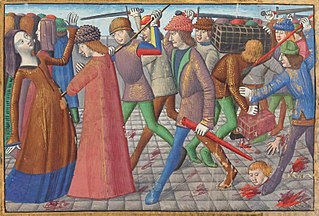
The Cabochien revolt was an episode in the civil war between the Armagnacs and the Burgundians which was in turn a part of the Hundred Years' War.

The Burgundian party was a political allegiance against France that formed during the latter half of the Hundred Years' War. The term "Burgundians" refers to the supporters of the Duke of Burgundy, John the Fearless, that formed after the assassination of Louis I, Duke of Orléans. Their opposition to the Armagnac party, the supporters of Charles, Duke of Orléans, led to a civil war in the early 15th century, itself part of the larger Hundred Years' War.

The Congress of Arras was a diplomatic congregation established at Arras in the summer of 1435 during the Hundred Years' War, between representatives of England, France, and Burgundy. It was the first negotiation since the Treaty of Troyes and replaced the 15 year agreement between Burgundy and England that would have seen the dynasty of Henry V inherit the French crown.

The Lancastrian War was the third and final phase of the Anglo-French Hundred Years' War. It lasted from 1415, when King Henry V of England invaded Normandy, to 1453, when the English lost Bordeaux. It followed a long period of peace from the end of the Caroline War in 1389. The phase is named after the House of Lancaster, the ruling house of the Kingdom of England, to which Henry V belonged.

The House of Valois-Burgundy, or the Younger House of Burgundy, was a noble French family deriving from the royal House of Valois. It is distinct from the Capetian House of Burgundy, descendants of King Robert II of France, though both houses stem from the Capetian dynasty. They ruled the Duchy of Burgundy from 1363 to 1482 and later came to rule vast lands including Artois, Flanders, Luxembourg, Hainault, the county palatine of Burgundy (Franche-Comté), and other lands through marriage, forming what is now known as the Burgundian State.
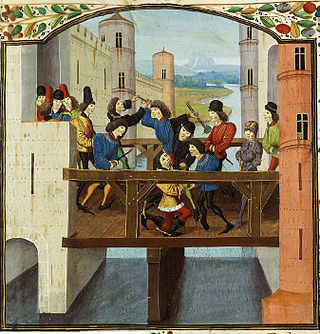
Tanneguy III du Châtel was a Breton knight who fought in the Armagnac–Burgundian Civil War and the Hundred Years' War. A member of the Armagnac party, he became a leading adviser of King Charles VII of France, and was one of the murderers of Duke John the Fearless of Burgundy in 1419.

The Armagnac–Burgundian Civil War was a conflict between two cadet branches of the French royal family – the House of Orléans and the House of Burgundy from 1407 to 1435. It began during a lull in the Hundred Years' War against the English and overlapped with the Western Schism of the papacy.
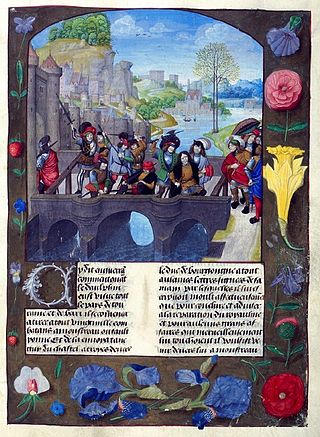
John the Fearless, Duke of Burgundy, was assassinated on the bridge at Montereau on 10 September 1419 during a parley with the French dauphin, by Tanneguy du Chastel and Jean Louvet, the dauphin's close counsellors.
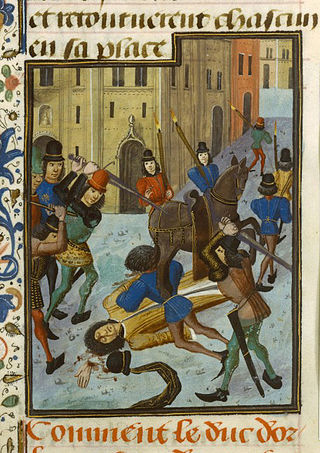
The assassination of Louis I, Duke of Orléans took place on November 23, 1407 in Paris, France. The assassination occurred during the power struggles between two factions attempting to control the regency of France during the reign of Charles VI, who was seen as unfit to rule due to his mental illness. One faction was led by Louis, the king's younger brother, and Queen Isabeau of Bavaria, Charles' wife. They attempted to seize control of the country from the House of Burgundy after the death of the powerful Duke of Burgundy, Philip the Bold, in 1404.

The Burgundian State is a concept coined by historians to describe the vast complex of territories that is also referred to as Valois Burgundy.